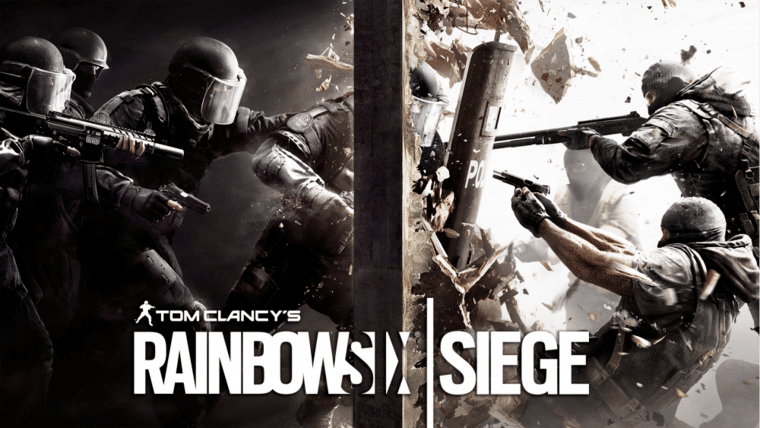Intel Core i5-10600K 5 GHz in Tom Clancy’s Rainbow Six Siege – test with 6 video cards | Video Games | Reviews
Testing took place during the free access period of the game from August 27 to September 4. The test will involve an Intel Core i5-10600K processor and 6 video cards: Radeon VII, RX 5700 XT, GTX 1080 Ti, Vega 56, GTX 1080, RX 480.
The processor was overclocked to 5 GHz, the ring was clocked at 4.9 GHz. The memory ran at 4000 MHz with changed secondary timings. All video cards were overclocked, the maximum power consumption limit was used, the fan speed did not change. Vega 56 was flashed with BIOS from Vega 64. On Radeon VII, the native fans were replaced with Gentle Typhoon D1225C12 GT3000-P 0.22. The RX 5700 XT graphics card also underwent a modification, the native fans were replaced with a GentleTyphoon D1225C12B6AS-25 4-PIN 0.123 A.
Test configuration
- Processor: Intel Core i5-10600K 5 GHz;
- Motherboard: ASUS PRIME Z490M-PLUS;
- Оперативная память: Team Xtreem 8Pack RAM 4000 MHz (2 x 8GB), TXBD432G4000HC18FQC01 (4000 MHz custom timings);
- Охлаждение: DEEPCOOL Watercooler GAMMAXX L240T WHITE, 2 штуки Gentle Typhoon D1225C12 GT3000-P 0,22 А;
- Case: absent;
- Power supply unit: Corsair СX750 750 Watt, CP-9020015-EU.
Video Cards: - Powercolor Radeon RX 5700XT Red Devil, AXRX 5700XT 8GBD6-3DHE/OC;
- Inno3D GeForce GTX 1080 Twin X2, N1080-1SDN-P6DN;
- PowerColor Radeon VII 16.0 GB AXVII 16GBHBM2-3DH;
- GIGABYTE Aorus GeForce GTX 1080 Ti 11 GB OC GV-N108TAORUS-11GD;
- PowerColor Radeon AXRX VEGA 56, 8GBHBM2-3DH;
- Powercolor Radeon RX 480 Red Devil, AXRX 480 8GBD5-3DH/OC.
Drivers: - AMD Adrenaline 2020 20.8.3;
- Nvidia 452.06;
- Windows 10;
- Tom Clancy’s Rainbow Six Siege Version 14664131 (4.09.2020).
Graphics settings
1024×768 TAA sharpness 0 scaling 25
Screen mode: full screen;
Field of vision: 60;
Texture quality: low;
Texture Filtering: Linear
Detail level: low;
Shading of objects: low;
Shadow quality: low;
Reflection quality: low;
Volumetric light: off;
Glare: off;
Scale-depth of field: off;
Anti-aliasing level: T-AA;
T-AA + Sharpness: 0;
Scaling: 25.
Low AA off
Screen mode: full screen;
Field of vision: 60;
Texture quality: low;
Texture Filtering: Linear
Detail level: low;
Shading of objects: low;
Shadow quality: low;
Reflection quality: low;
Volumetric light: off;
Glare: off;
Scale-depth of field: off;
Smoothing level: off.
Ultra FXAA
Screen mode: full screen;
Field of vision: 60;
Texture quality: ultra;
Texture filtering: anisotropic 16X;
Detail level: ultra;
Shading of objects: high;
Shadow quality: very high;
Reflection quality: high;
Volumetric light: SSBC;
Glare: Glow + Glare;
Scale-Depth of Field: On;
Anti-aliasing level: FXAA.
All results were taken from in-game benchmark, below is a screenshot from the game. The game used the Vulkan API, the developers updated the game benchmark.
Video memory and RAM usage







Nvidia graphics cards use less RAM than AMD graphics cards. All video cards use almost the same amount of video memory. As the resolution increases, the video memory consumption increases. For low graphics settings, a video card with 3 GB of video memory is enough. For high settings, you need a graphics adapter with 6 GB of memory.
GPU temperatures







The graphs above show the average temperature during the benchmark. At low settings, the coolest video cards turned out to be Radeon VII and 5700 XT, and cooling of the Vega 56 already in 3840×2160 resolution does not cope with thermal throttling. At high settings, the Vega 56 started to have problems with thermal trolling at 2560×1440.
Graphics card performance
Testing at low settings






At low settings in almost all resolutions, the Radeon VII graphics card became the leader in performance. The more the video card shows fps, the higher the processor load.
Testing at high settings






At high settings, the situation is repeated. Radeon VII is inferior in 1920×1080, in other resolutions it is the undisputed leader. Vega 56 loses in performance at a monitor resolution higher than 1920×1080 due to thermal overloading and is compared with the GTX 1080.
Testing at the lowest settings


These graphs show how much the video card affects the performance of the processor. Nvidia has better performance, but also more CPU load.
The Intel i5-10600K processor in overclocking did not limit the performance of video cards in all current resolutions at low and high settings. The leader among high-performance graphics adapters is the Radeon VII. In the rivalry Vega 56 VS GTX 1080 was won by a video card from AMD, without thermal overturning it was ahead.















